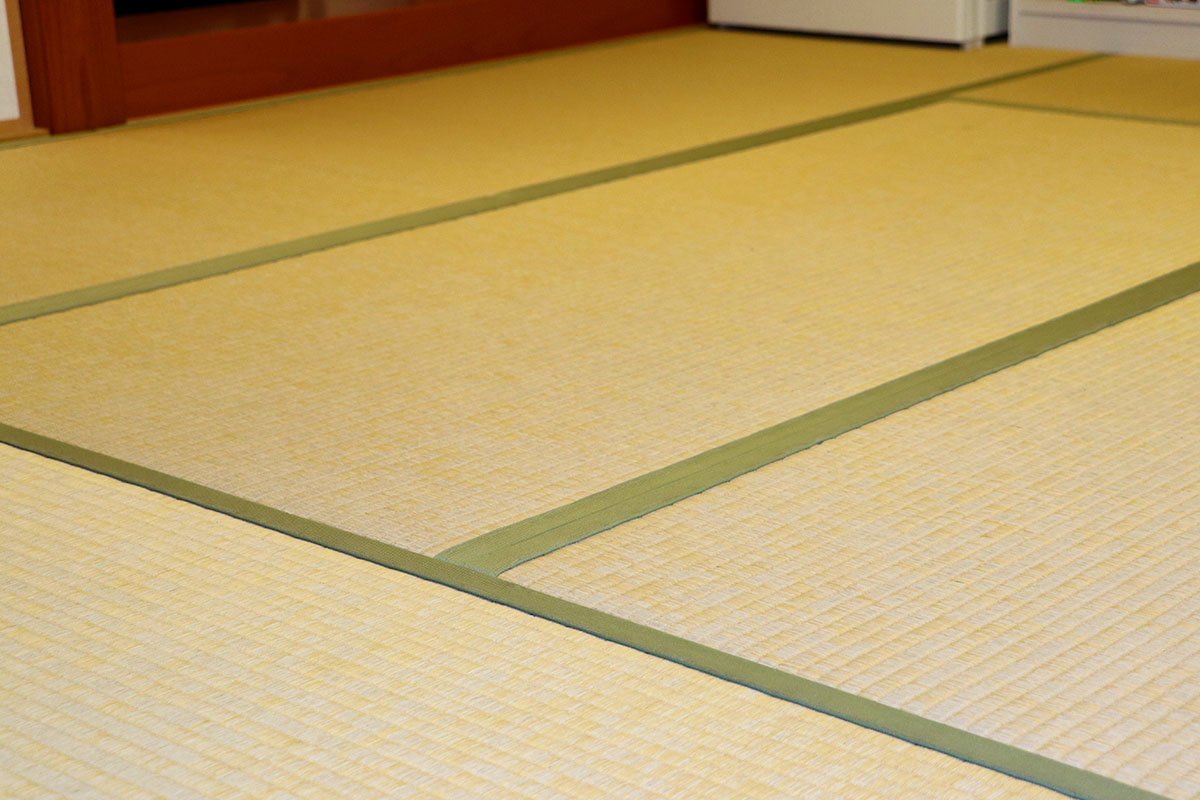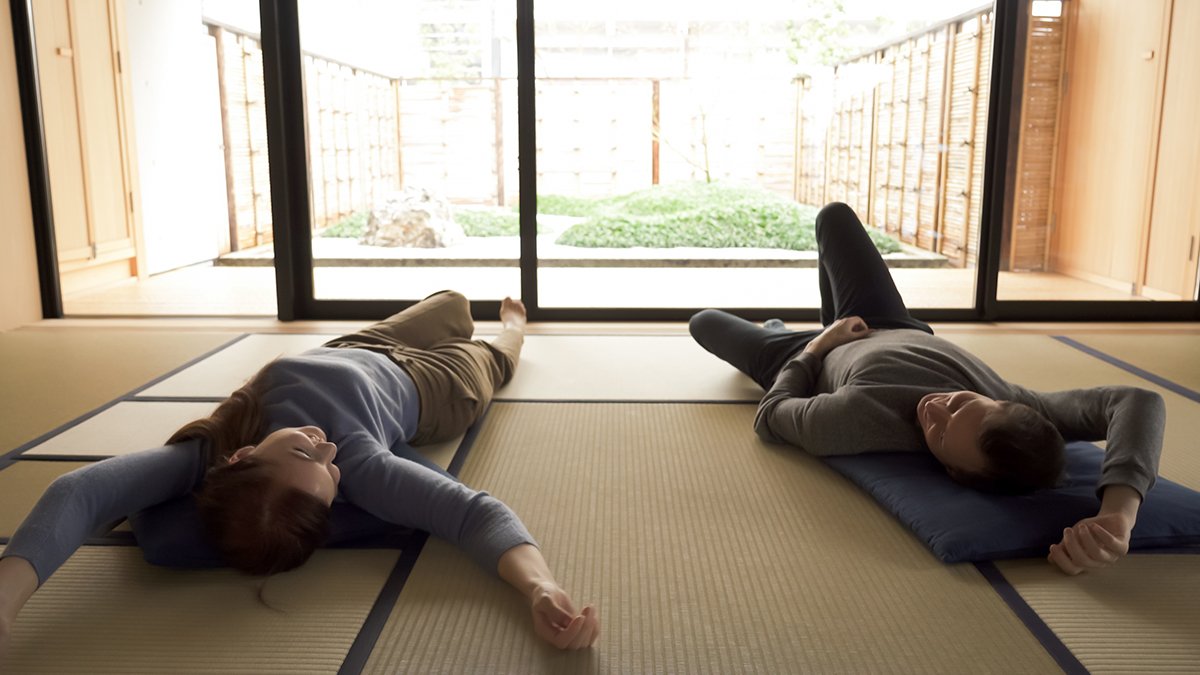When it comes to typical Japanese culture, many people probably think of tatami mats.
Although many homes these days have flooring, it is still true that many people say that tatami mats are relaxing.
In this article, we will introduce the history of tatami mats, Japanese culture, and the appeal of tatami mats from the perspective of foreigners. Let's take another look at the appeal of tatami mats.
Japanese culture seen through the history of tatami mats

While many aspects of Japanese culture were introduced from China, tatami mats are uniquely Japanese. Let's take a look back at the history of Japan and the tatami mats that remain a symbol of Japanese culture to this day.
Tatami mats have been around since the Heian period
Tatami-like floor mats are mentioned in the Kojiki, but it is believed that tatami mats did not take on their current form until the Heian period.
However, rather than being used to cover the entire room as is the case today, it seems that they were used as bedding placed on the wooden floor.
At that time, tatami mats had different thicknesses and edge patterns depending on the user's status, so they were not used by everyone like they are today.
Kamakura period
During the Kamakura period, the style of covering the entire room finally took hold. This style was first advocated at Ginkakuji Temple, where the building was built in the Shoin style.
Of course, tatami mats were still a luxury item at this time, so only the emperor and high-ranking aristocrats lived on them.
By the way, the edges of tatami mats have various patterns that represent the rank of the nobility, so it was taboo to step on the edges.
This etiquette remains to this day, and it is still taboo to step on the edges of tatami mats.
Azuchi-Momoyama period
With the development of the tea ceremony during the Azuchi-Momoyama period, tatami mats began to spread among the common people.
It was during this period that the way tatami mats were laid changed depending on the location of the hearth.
Edo period
It was during the Edo period that tatami mats became popular among the common people.
It is said that Sen no Rikyu was the one who popularized tatami mats to the common people along with the culture of the tea ceremony.
The tea ceremony culture popularized by Sen no Rikyu led to the spread of the culture of covering entire rooms with tatami mats to the common people. The "tea room" where the tea ceremony was held was the only space where people of all classes, including farmers, samurai, and aristocrats, could be equal.
Tatami mats were highly valued by the townspeople of Edo, and they developed ingenuity to ensure they could be used for a long time. Until then, wild tatami mats were used, but from the Edo period, full-scale cultivation of rush grass began, and by the end of the Edo period, the professions of "tatami makers" and "tatami craftsmen" were born.
Showa
In the Showa era, with the influence of rapid economic growth, people's lifestyles began to change to a more Western style. People began to move away from sitting in Japanese-style rooms and towards sitting on chairs and sofas.
Even amidst these changes, homes always had a Japanese-style room.
present day
In modern times, with the spread of flooring, Japanese-style rooms with tatami mats have become less common.
More and more people are opting out of creating Japanese-style rooms in their homes because tatami mats are difficult to maintain, they require accessories such as shoji screens, and they are expensive to set up.
However, in recent years, tatami mats have begun to be made to suit changes in our lifestyles, such as tatami mats that are easy to maintain using chemical materials and tatami mats that can simply be laid down, and tatami mats are once again becoming popular.

Tatami mats are increasingly being exported overseas - what is their appeal to foreigners?
Tatami mats have recently become popular overseas. What is the appeal of tatami mats from a foreigner's perspective?
We will introduce the reasons why tatami mats are popular overseas.
Japanese-style rooms are popular among foreigners living in Japan
Japanese-style rooms are becoming popular among foreigners living in Japan. For foreigners who are interested in Japanese culture and living in Japan, Japanese-style rooms are one of the elements that allow them to feel like they are in Japan.
Even people who are not Japanese seem to be drawn to the charm of tatami mats, saying things like, "I love the smell" and "They're calming."
In foreign countries, houses incorporating Japanese-style rooms are also being built.
Building homes that incorporate Japanese culture is becoming popular overseas.
Japanese culture, such as tatami mats and shoji screens, is incorporated into the interior to create a more relaxing space.
In other countries, homes are built with a free-spirited approach, such as placing a bed on tatami mats or arranging tatami mats and a floor bed on top of the flooring.
The secret to its popularity seems to be its ability to stylishly transform traditional Japanese culture.
Foreign dimensions listed on the site for international orders
As tatami orders from overseas are increasing, more and more Japanese tatami stores are listing foreign dimensions on their websites. Because home dimensions differ between Japan and overseas, ordering used to be difficult, but the popularity of tatami in recent years has made it easier for people from overseas to order.
Customers are a diverse group, including Japanese people living overseas and foreigners who want to incorporate Japanese culture. The proportion of tatami mats shipped overseas is steadily increasing, with some stores now accounting for 40% of the total.
summary
In this article, we have introduced tatami mats, which are becoming increasingly popular overseas, their history, Japanese culture, and the appeal of tatami mats from the perspective of foreigners.
Recently, there has been an increase in orders for tatami mats not only from Japanese people living overseas, but also from foreigners who want to incorporate them into their interiors.
The popularity of tatami mats in Japan, which had been declining until now, is now making a comeback, and the relaxation they provide is probably the secret to their popularity both domestically and internationally.
Why not take this opportunity to rediscover the charm of tatami mats?
This article has been partially re-edited by KARUTA from an article originally published on "Nihongo Biyori."
Any unauthorized reproduction or use of the contents, text, images, illustrations, etc. of this website is strictly prohibited.
